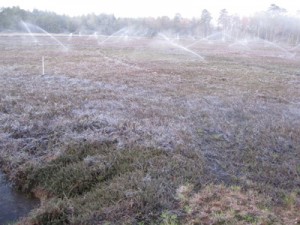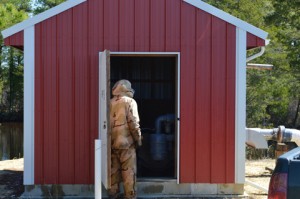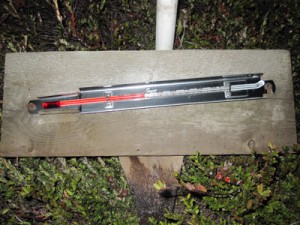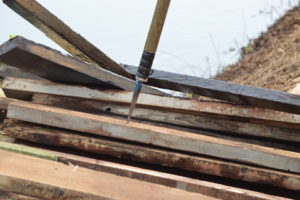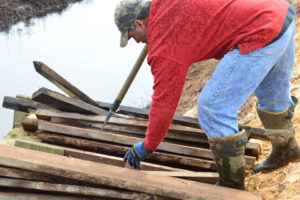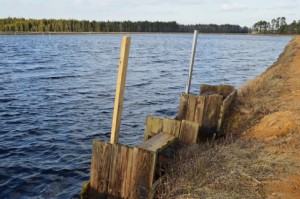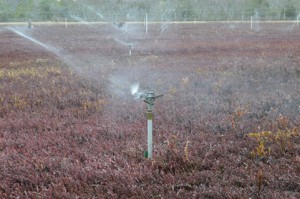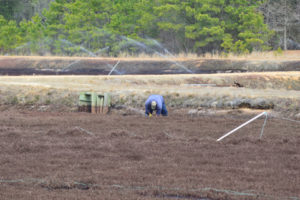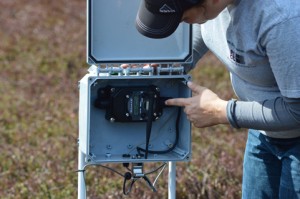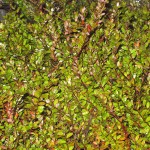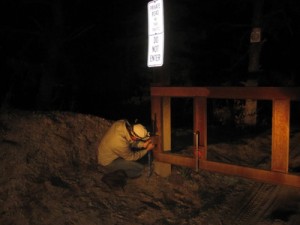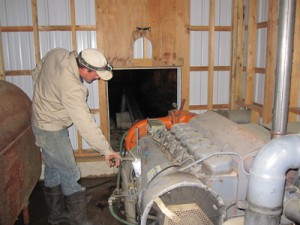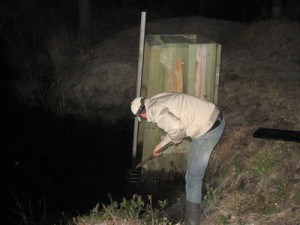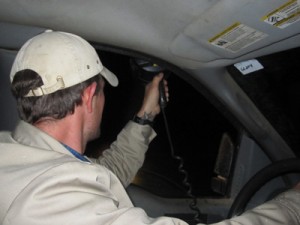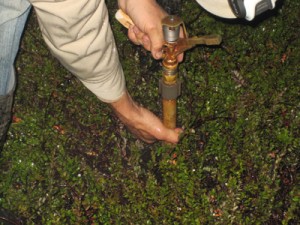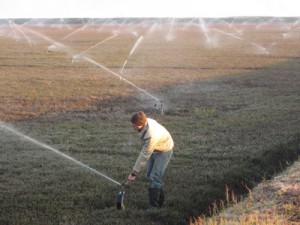One of the toughest things cranberry growers do is managing springtime frost conditions. In the spring, there is a danger to the crop when the temperature drops. Typically, a cranberry bog is built at a lower level than the land immediately surrounding it and the bog temperature can drop ten to fifteen degrees lower than the uplands. These conditions make monitoring bog temperature a top priority once the winter water comes off. It’s no exaggeration to say there would be no crop if we didn’t watch for frost on the bogs.
The first step is monitoring the temperature. Each bog has a thermometer (usually located in the coldest section) that requires frequent checking throughout the first part of the night. Once the temperature drops to between 33 and 35 degrees Fahrenheit (depending on the stage of growth), it’s time to turn on the pumps. More than forty years ago we used to flood the bogs to prevent frost damage; we now use sprinklers instead. When the water from the sprinklers freezes on the vines, it controls the temperature well enough to keep them from harm. It’s also necessary to check the surrounding reservoirs and canals to make sure that the water supply is sufficient to supply the pumps. That can take some time, and doesn’t always need to be done all at once. Depending on location and conditions–is the bog surrounded by woods? Where is the wind coming from? Is the sky clear or overcast?–some will be started earlier than others.
In recent years we’ve moved to an automation process to make this easier on our team, with a combination of automated and analog thermometers for optimal monitoring. The automated thermometer gives us the initial indication that the temperature is dropping. When it hits the first threshold, it sends the notification, and that’s when members of the frost team head out to look at the analog thermometers.
Holding the winter flood until later in the month means that we’ve not had many frost nights yet, but it won’t be too long now!

